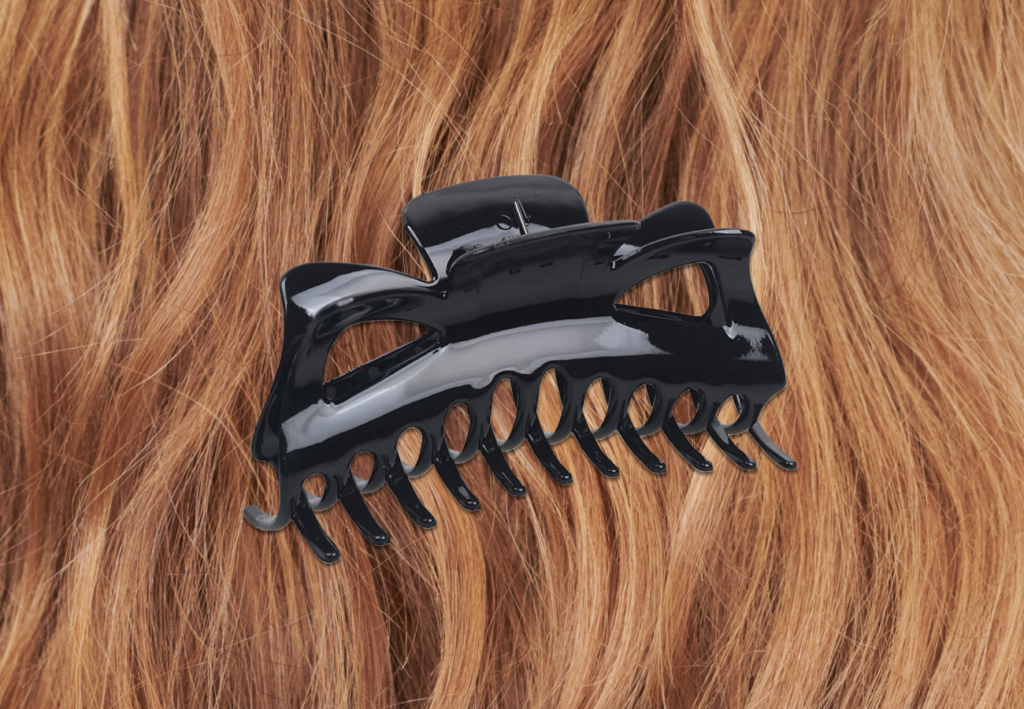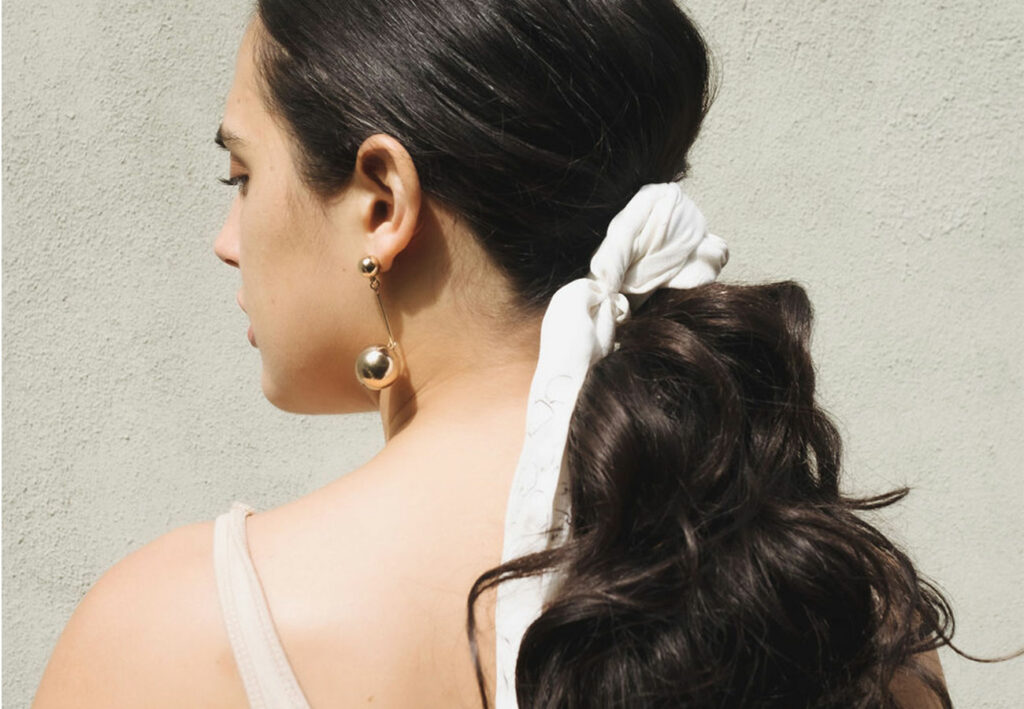Curly Hair Tips & Tricks
How To Comb Curly Hair
One of the first steps to caring for curly hair is learning the best way to detangle it—and specifically, how to detangle curls with a wide-tooth comb. Why should you not brush curly hair? Because curls can be very fragile, so to avoid damage, it is important not to disrupt the curl pattern with a brush. If you start from the bottom and work your way up, you can gently comb through tangles instead of creating more knots. Hold each section as you comb through it, so you are not pulling at the scalp.
If your hair feels unmanageable post-shower, try combing your hair before you step out. Apply your conditioner and then very gently comb through to detangle your hair. The conditioner will help support the hair to prevent any breakage.
How To Detangle Curly Hair without Combs
Curtis prefers a finger detangling. “Combs and brushes can cause split ends and breakage,” she says. “Apply a generous amount of conditioner. If hair is thick, take it in sections, starting at the top. Apply pressure with flat hands (prayer hands) to loosen tangles, then working from the bottom up, separate fingers and detangle. If all else fails, a soft bristle brush (like a Wet Brush), a wide tooth comb, or a flexible brush (like from Felicia Leatherwood) are the tools that will help.”
How to Part Curly Hair
It’s easiest to create a part in your hair outside of the shower, after you diffuse-dry. That’s because any hair part created in the shower will likely be tossed away during the dry session. So, after your hair is clean and dry, imagine the point at which you want to create a part. Instead of teasing everything directly to either side of this part, you want to guide your fingers along the line, tossing each defined curl to the side it prefers to fall.
In doing so, you create a much more buoyant, natural part, even if it’s one that zig zags backwards instead of a defined, singular line. This method of parting ensures a natural lift all the way along the line, too, and thus looks much more natural as a whole.
However, some curly hair styles benefit from a clean, consistent part—especially when it’s down the center of the head, to create symmetry. Have fun playing around until you find your preferred part.
Spraying leave-in conditioner into the curls should help them settle into their newly parted directions, and will also help unravel larger curls that you want to send in multiple directions or to increase overall definition.
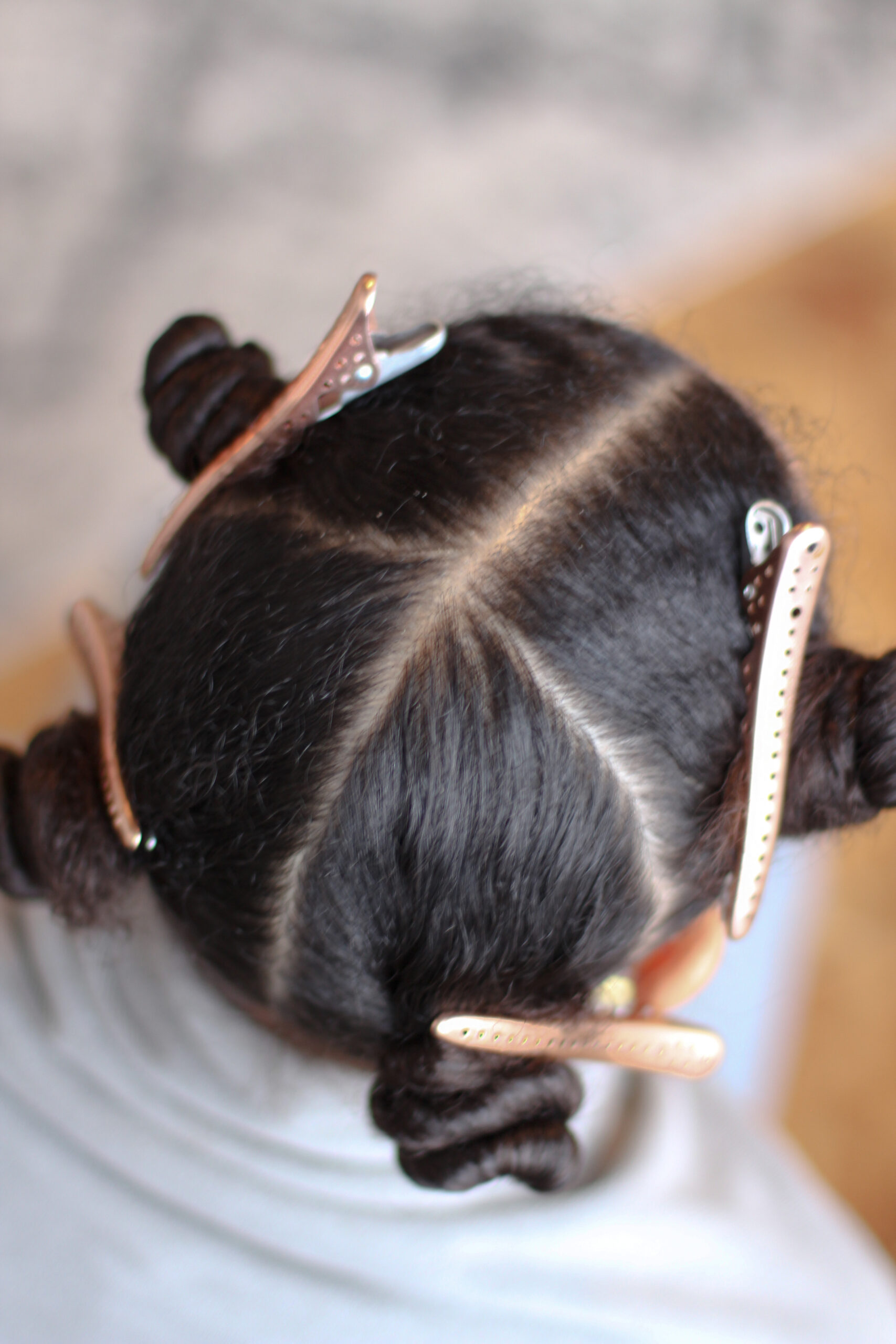
Trim your Curls
Another important curly hair tip is having regular haircuts. This has many benefits, such as preventing damage and reduced split ends, which can cause unwanted frizz. It will also ensure that your hair constantly looks fresh and healthy.
How frequently you trim your hair is up to you, and how you prefer to care for your curls: “If you follow the true curly girl method—no sulfates, silicones, alcohol, brushes, combs, and absolutely no blow dryers or hot tools—then you will probably cut the curls anywhere from four to six months,” Curtis says. “If you have a short hairstyle it will depend on how fast your hair grows to keep the shape you want.” Many people find that six to eight weeks is a steady interval for trim-ups, particularly if they are prone to split ends. You’ll usually know that it is time for a haircut when your curls begin to knot frequently and easily.
Determine Your Hair Porosity
Simply put, hair porosity is your hair’s ability to absorb moisture. And for curls, moisture is everything. As such, knowing your hair’s own porosity will help determine how much moisture you need to pump into it, or how frequently. That being said, having high porosity means your hair also loses moisture as fast as it absorbs any. Low-porosity hair might be stubborn on the receiving end, but it is also less threatened by the surrounding, drying environment.
To determine your hair’s porosity, snip a stray strand of hair after cleansing—a couple inches should suffice, and the hair needs to be free of any product buildup (conditioner included). Drop the hair into a full eight ounce glass of room-temperature water. If hair has low porosity, it will float to the top. High-porosity hair will sink to the bottom. If you have balanced, “normal” porosity, it should hover anywhere in the water.
How to Deep-Condition Curly Hair
It is important to find a balance with moisturizing curly hair. You don’t want your hair to look weighed down with product, but you also don’t want dry ends. The best thing to do is experiment with different leave-in conditioners. A little can go a long way, so start with a dime-size amount on the ends of your hair. This will give your curls added shine and bounce (while also preventing split ends). “A good leave-in should be free of silicone and be water soluble,” Curtis says.
You should also deep condition your hair anywhere from once a week to once a month, says Curtis. The intensity of the product will determine the frequency of use; some deep conditioners are okay to use once weekly, like a deep hydrating conditioner. Deep protein conditioners, on the other hand, should only be used once a month. “Many products contain protein already and too much protein can crystallize and cause breakage,” she warns.
“All deep conditioners work best when combined with clarifying,” Curtis adds. Look to add in a clarifying shampoo to your routine, especially when you’re doing a treatment.
Apply a deep conditioner by massaging the product into all of your curls. Do this in clean, damp (towel-dried) hair. Tie everything up and cover it, if possible, using a shower cap. Some people like to use a blow dryer to wave some warmth over the shower cap, too, which will encourage the cuticle of the hairs to open, and thus boost absorption of the nutrients in the conditioner. Rinse the product away after the brand’s designated amount of time has passed (it could be 15 minutes, it could be an hour, it could be overnight). Typically, the thicker your hair, the longer you will leave it in.
Diffuser
Using a blow dryer by itself can lead to dry hair that can lose it’s curl pattern and overall shape. However, if you use a diffuser attachment, this can completely change the outcome. Using a diffuser works by spreading the hot air more evenly on your hair, which helps to minimize damage and unwanted frizz. This method can also help even out your curl pattern and give you a volume boost.
That being said, the frizz caused by non-diffused air can be a good thing for some: “Some curlies like it because it makes the hair bigger and fuller,” Curtis adds.
Blow Dry Upside Down
If you blow dry your curls (or any hair texture) in an upright position, then the hair is encouraged to settle into a pressed-down, less-voluminous position. However, the reason you see many people blow drying upside down is because it allows the root of the hair to extend and be dried in a more voluminous state. As a result, when you stand upright again, you have more bounce and height overall.
Give Coily Hair Extra Moisture
The more coiled the hair, the more moisture it requires. “Go heavier on styling products,” Curtis says. “Make sure hair is drenched while styling. You may even have to continue spraying water on the hair while working product in, because even the slightest amount of towel drying (even a microfiber) can produce unwanted frizz.”
Pineappling Curly Hair
If you struggle with keeping your curls intact while you sleep, you may want to try something called “pineappling” to care for your hair, even while you’re catching some Zs. (It’s also a terrific daytime style.)
This is a technique where you loosely tie your hair up at the highest part of your head to protect the curls and keep the volume in your hair. This can also help to reduce bedhead. It is best to use a silk or satin scrunchie for this method to minimize creasing and protect your hair from breakage. When you get up in the morning, simply take the ponytail down and shake out your glorious curls.
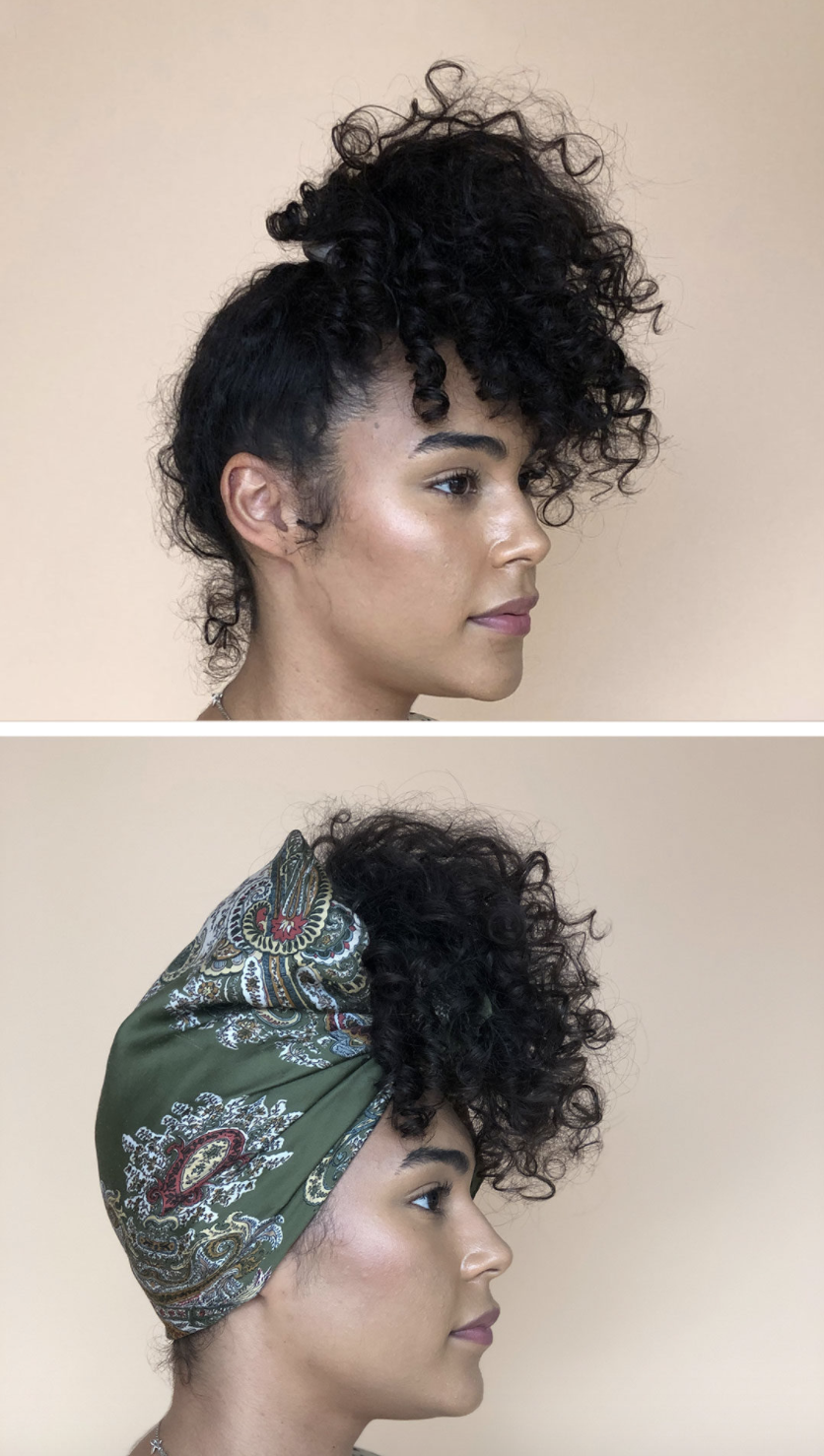
Silk Pillowcase
Most people use cotton pillowcases, which are very absorbent. While you sleep, your hair produces oils to help moisturize your hair. If you have a cotton pillowcase, it could be absorbing all that moisture and robbing your hair of nutrients. This means that in the morning, your hair can feel dryer and even become more tangled. Instead, sleeping with a silk pillowcase helps hair keep its moisture during the night. The slippery material won’t get caught on your hair, either, thus minimizing damage and unwanted frizz. (Silk is also an anti-static fabric, hence less loss of definition.) It is also better for your skin to use a silk pillowcase as it helps to minimize fine lines, and since the material is breathable and hypoallergenic.
Curling Iron
It may seem redundant to curl hair that is already curly, but using a curling iron can help refresh curls on the second or third day. You should use a curling iron that has a similar diameter to your curls. A curling iron will allow you to reshape any curls that have fallen out, especially the ones near the front of your face. You don’t have to curl every piece on your head, just the ones that you feel need a little bit of TLC. Just remember to use a heat protectant in your styling products to avoid damage.
Curtis manages her curls and her customers’ without any hot tools. It’s possible to refresh curls with other hair care methods from this list, so don’t worry if you also prefer to avoid hot tools.
Curly Hair Styles for Women
Now that we’ve covered the most essential hair care tips for curly hair, here are some of the most universal curly hair styles that you should have ready to deploy on any given day.
Slicked-Back Pony
This is a great style for keeping your hair out of your face but still showing off your beautiful curls. First, wet hair and apply gel. “A lot of people like to use products with wax, but my preference is to resist as these can cause extreme buildup that must be removed with harsh detergents,” says Curtis. “Secondly, too much slicking can cause damage to curls and act like a relaxer.”
Next, part your hair down the middle. Then, use a brush to pull the top parts from both halves of your hair into a slicked-back ponytail. Hold it together with a hair tie, and volumize the back part with your fingers. This is optional, but you can style your baby hairs to frame your face using a toothbrush and some more gel.

Braided Headband
Another easy look for curly hair is creating a headband with your own hair. First, on damp hair, create a deep side part. Braid along your hairline going toward your temple on the opposite side. When you reach behind your ear, pin the braid underneath your other hair. Play with it a little bit to make sure the braid looks as natural as possible.
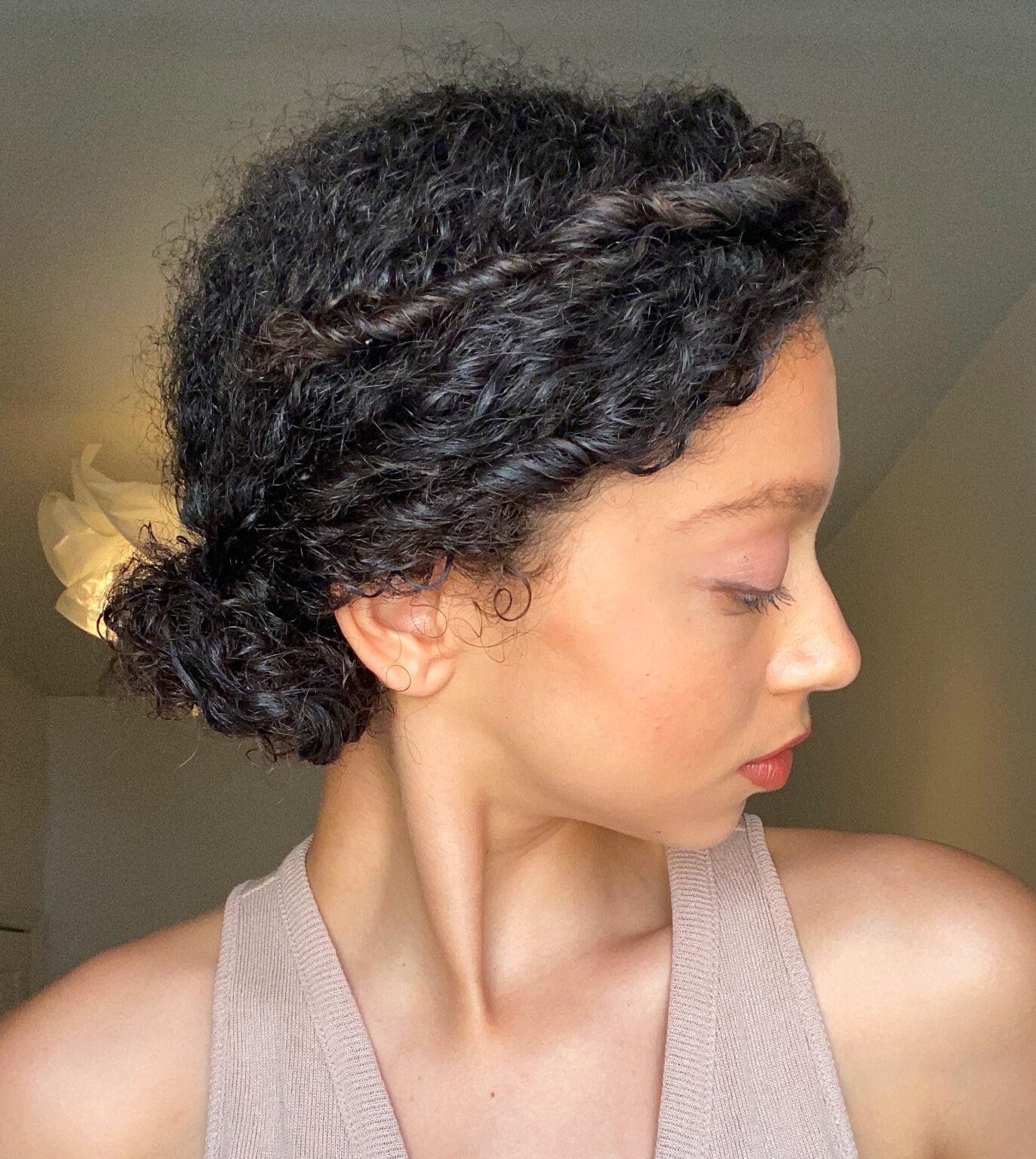
Braids
Braids are another popular style for curly hair, but they come with a major warning from Curtis: You need to wear them loose. Otherwise, too much braiding will cause breakage, which worsens with tightness, she says.
As for looser options, these braids can help protect curls from becoming tangled or from potential breakage. Make sure you properly moisturize your hair beforehand, though, to prevent any damage.
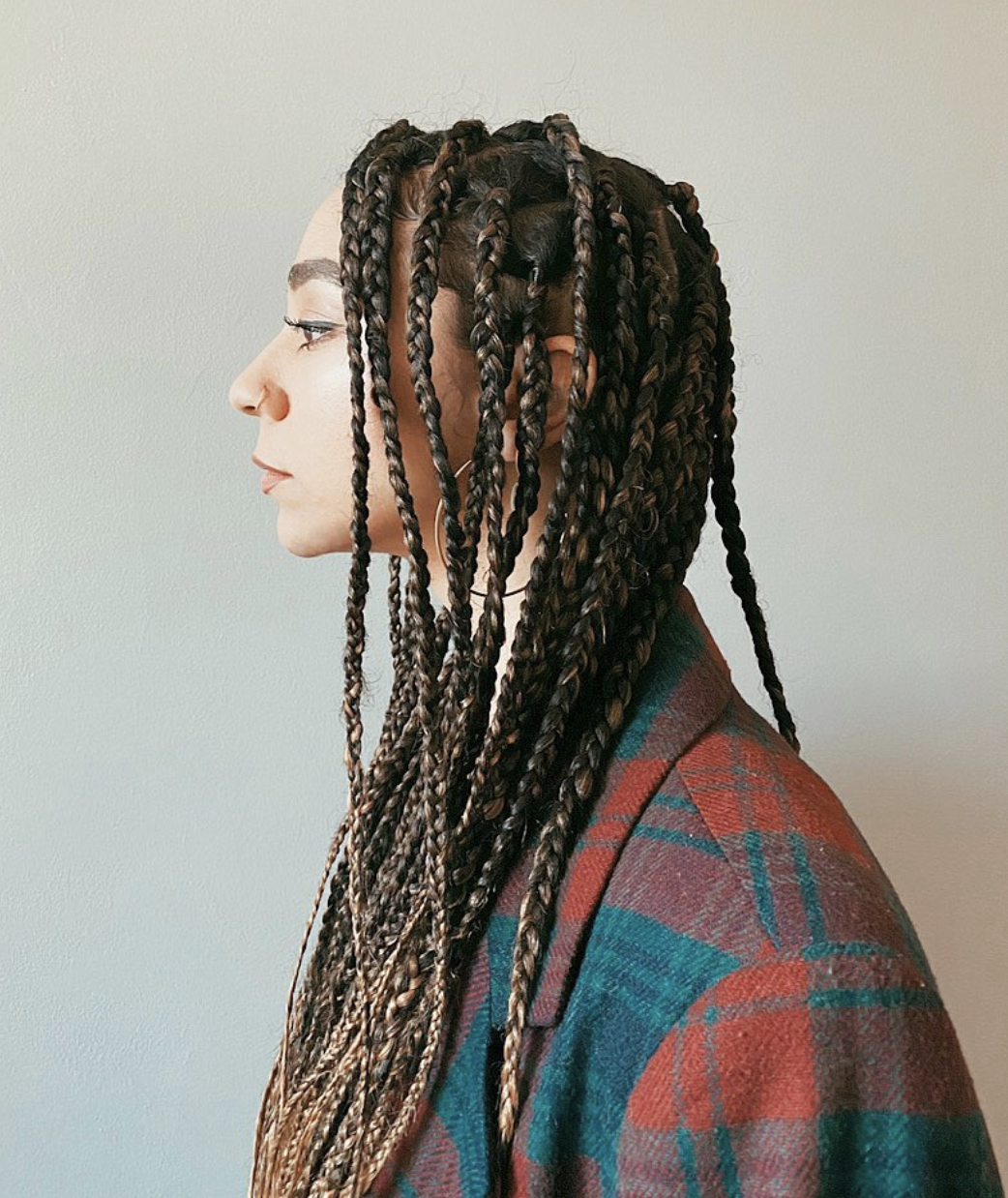
The Center Part
A center part can be defined or not, using the “natural looking” method outlined above, or cleanly parted with a comb. By placing the part in the center of the head, it frames the face and gives the style perfect symmetry. (Whereas side parts, which tend to be more common, are best managed with less-defined parts. They can sometimes be too hard to tame on the more voluminous side of the part.)
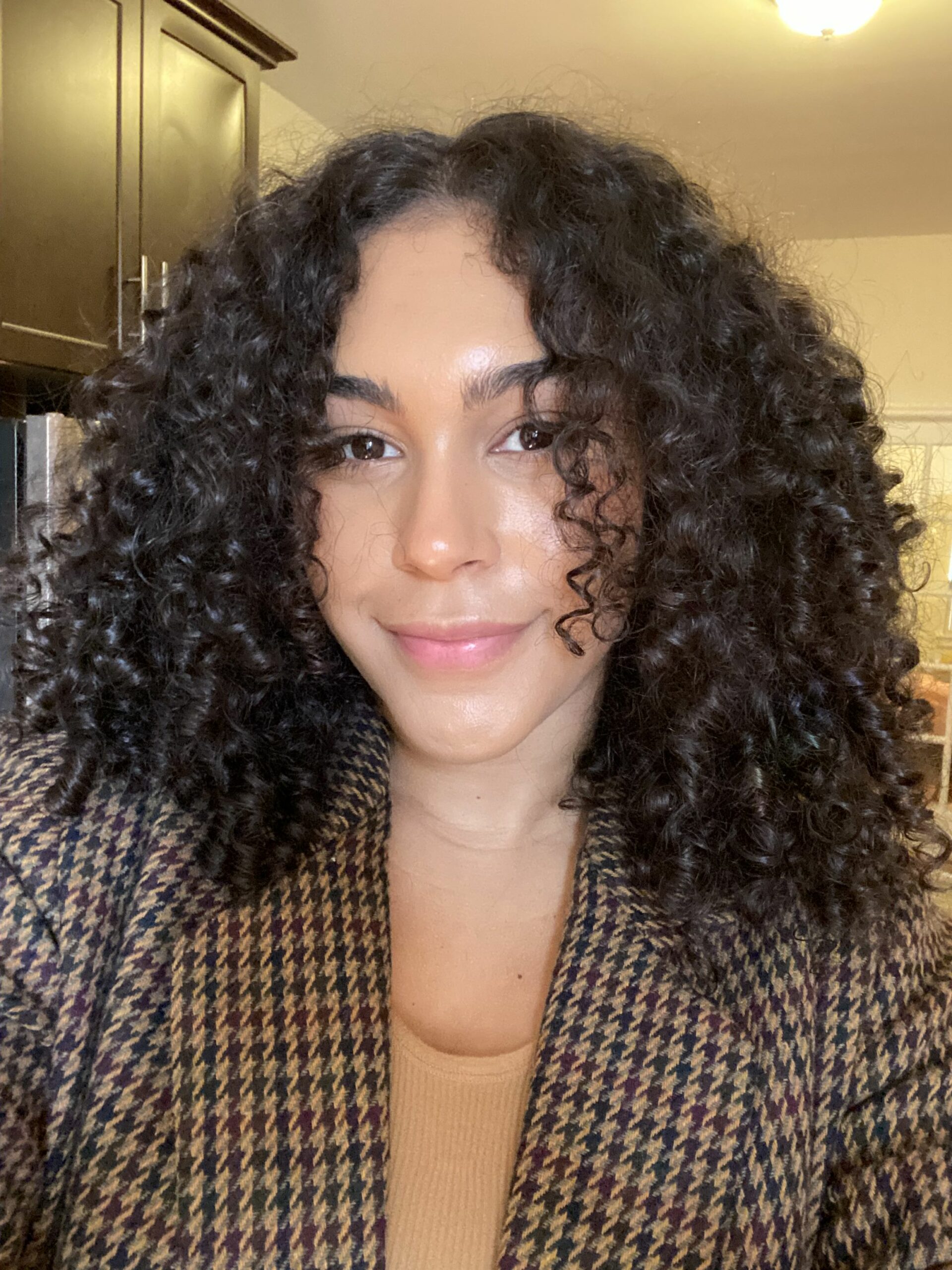
In Summary
Sure, it might take a little bit of trial and error to learn what works best for keeping your curls healthy and moisturized, but don’t give up. You’ll find the perfect curly hair style routine that will make you feel invincible, and one that leaves your curls bouncy, luscious, and beautiful every day.


